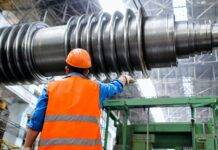
Hearing Conservation: Implementing Noise Reduction Measures and Conducting Hearing Tests
Introduction
Hearing conservation is a crucial aspect of workplace safety, particularly in environments where employees are exposed to high levels of noise. This article delves into effective measures for noise reduction and the importance of regular hearing tests to prevent hearing loss and promote a healthier work environment.
Understanding the Impact of Noise on Hearing Health
- Noise-Induced Hearing Loss (NIHL)
- Gradual Damage: Prolonged exposure to loud noise levels can lead to irreversible damage to the inner ear.
- Cumulative Effect: The damage accumulates over time, often unnoticed until significant hearing loss occurs.
- Common Workplace Noise Sources
- Manufacturing and Construction: Heavy machinery and equipment.
- Entertainment Industry: Concerts, music venues, and film production.
- Transportation: Aircraft, trains, and industrial vehicles.
- Effects on Overall Well-Being
- Increased Stress Levels: Constant exposure to loud noise can contribute to heightened stress levels.
- Communication Challenges: Hearing impairment can lead to difficulties in communication and increased workplace accidents.
Implementing Noise Reduction Measures
- Engineering Controls
- Isolation and Enclosure: Design workspaces to isolate noisy machinery and enclose loud processes.
- Quieter Equipment: Invest in quieter machinery and technology to minimize noise emissions.
- Administrative Controls
- Job Rotation: Rotate employees through noisy and quieter tasks to reduce overall exposure.
- Limiting Exposure Time: Implement policies to limit the duration of exposure to high noise levels.
- Personal Protective Equipment (PPE)
- Earplugs and Earmuffs: Provide and encourage the use of ear protection in areas with elevated noise levels.
- Customized Hearing Protection: Offer personalized hearing protection based on individual needs and comfort.
- Noise Monitoring and Assessment
- Regular Assessments: Conduct regular noise assessments to identify areas with elevated noise levels.
- Monitoring Equipment: Use noise monitoring equipment to measure and record noise levels over time.
Conducting Hearing Tests: Importance and Frequency
- Baseline Hearing Tests
- New Employee Screening: Conduct baseline hearing tests for new employees to establish their initial hearing status.
- Comparative Reference: Baseline tests serve as a reference point for future assessments.
- Regular Audiometric Testing
- Annual Tests: Implement annual hearing tests for employees exposed to continuous or intermittent high noise levels.
- Early Detection: Regular tests enable early detection of changes in hearing thresholds.
- Educating Employees
- Awareness Programs: Conduct educational programs to raise awareness about the importance of hearing tests.
- Recognizing Symptoms: Train employees to recognize early signs of hearing impairment.
- Employee Involvement
- Encouraging Participation: Foster a culture where employees actively participate in hearing tests without fear of consequences.
- Feedback Mechanism: Establish channels for employees to provide feedback on their experiences during hearing tests.
Benefits of Hearing Conservation Programs
- Prevention of Hearing Loss
- Early Intervention: Regular hearing tests allow for early identification and intervention, preventing irreversible hearing loss.
- Customized Protection: Individualized hearing protection measures can be implemented based on test results.
- Improved Workplace Communication
- Reduced Communication Barriers: Maintaining employees’ hearing health enhances communication and reduces misunderstandings.
- Enhanced Safety: Clear communication is crucial for maintaining a safe work environment.
- Compliance with Regulations
- OSHA Compliance: Hearing conservation programs ensure compliance with Occupational Safety and Health Administration (OSHA) regulations.
- Legal Protection: Adherence to regulatory standards provides legal protection in case of workplace-related hearing impairments.
Conclusion
Prioritizing hearing conservation in the workplace involves a multi-faceted approach, combining noise reduction measures with regular hearing tests. Engineering and administrative controls, coupled with the use of personal protective equipment, contribute to minimizing exposure to loud noise. Conducting baseline and regular hearing tests not only aids in the early detection of potential issues but also allows for tailored interventions. By fostering a culture of awareness and active employee involvement, organizations can create a safer and healthier work environment.
How To Prepare Risk Assessment for Noise
Noise Hazards and Control Measures
Frequently Asked Questions (FAQs)
- Why is hearing conservation important in the workplace?
- Hearing conservation is crucial to prevent noise-induced hearing loss, reduce workplace stress, and enhance overall well-being and safety.
- What are some common workplace noise sources?
- Common sources include heavy machinery in manufacturing and construction, entertainment venues, and transportation-related noises.
- What are effective noise reduction measures in the workplace?
- Engineering controls, administrative controls, and personal protective equipment (PPE) are effective measures. These include isolating noisy processes, limiting exposure time, and providing ear protection.
- How often should employees undergo hearing tests?
- Employees should undergo baseline hearing tests upon employment, followed by annual audiometric testing, especially for those exposed to high noise levels.
- What are the benefits of hearing conservation programs?
- Benefits include the prevention of hearing loss, improved workplace communication, compliance with regulations, and legal protection.
























